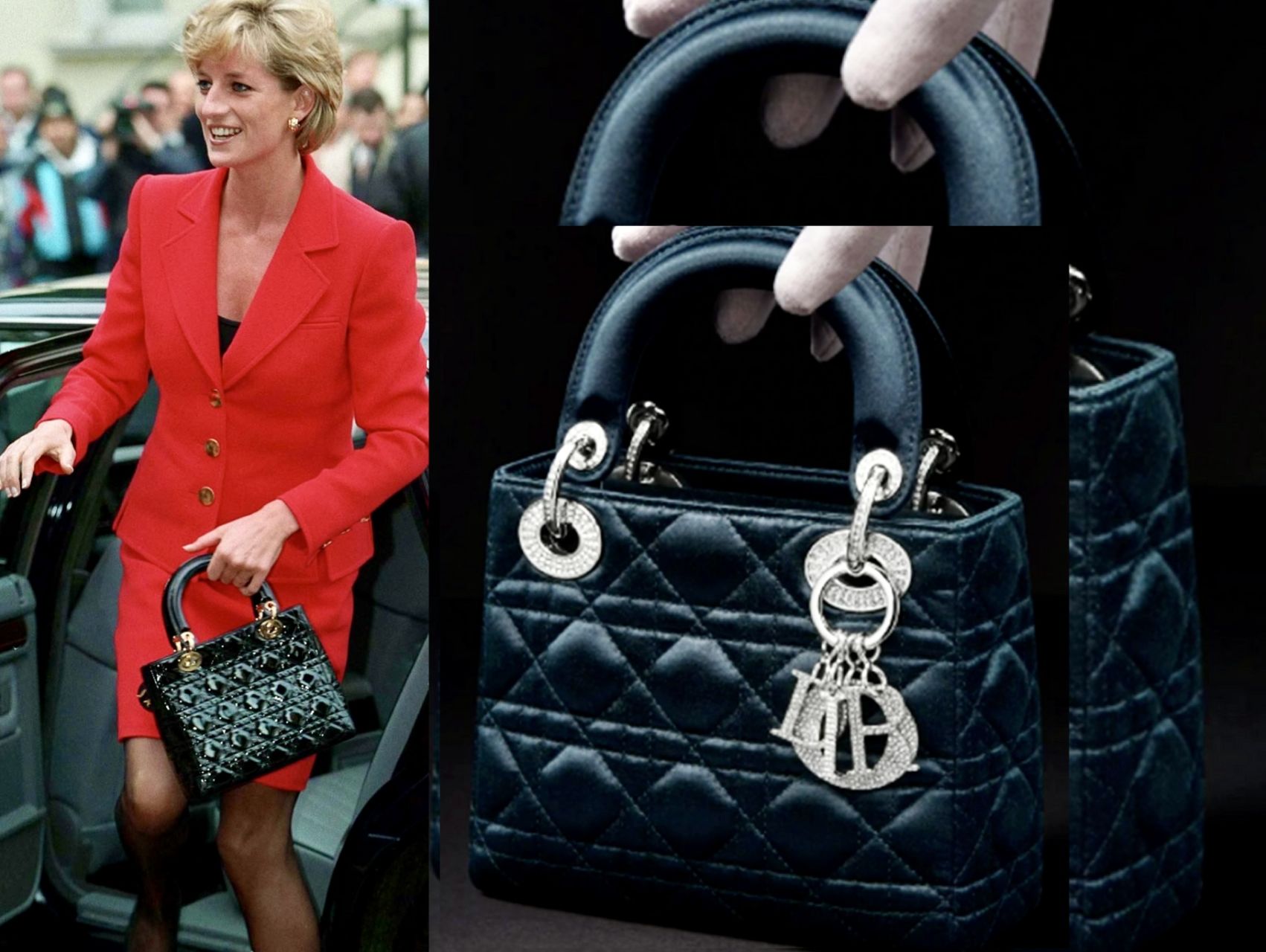
A diplomatic gift, an evocative name, and an unmistakable silhouette. The Lady Dior embodies the subtle dialogue between aristocracy and the symbolic power of fashion. Born in 1995, it has since become a global icon.
In September 1995, the destiny of an accessory was forever transformed during an official visit by Princess Diana to Paris. Invited to the Cézanne exhibition at the Grand Palais, the princess received a Dior bag from Bernadette Chirac, then France’s first lady. This understated object, still unnamed, was soon destined for legend, born from the unexpected union of British royalty and French elegance.
Designed by Gianfranco Ferré for Dior in 1994 and affectionately nicknamed “Chouchou” in the ateliers, the bag draws inspiration from the cannage motif, a nod to the Napoleon III chairs cherished by Christian Dior. Its structured silhouette, high handles, and charms spelling out D I O R combine architectural precision with the delicacy of jewelry. From its first appearance in Buenos Aires, captured by photographers, the bag became the Princess of Wales’ signature accessory. Dior soon renamed the model in her honor: Lady Dior.
The bag’s allure was inseparable from Diana’s aura, a symbol of grace and compassion. Each appearance with the Lady Dior became a subtle manifesto of style, blending royal protocol with the independence of a modern woman. Quickly, it transcended fashion to become a statement piece, an accessory imbued with history, status, and desire.
It would be mistaken to assume that this iconic model was exclusively intended for Lady Diana. The Lady Dior existed before her encounter with it, yet it was the alchemy between the object and its wearer that cemented its iconic status. A chance meeting shaped the destiny of an accessory already poised to enter fashion legend.
Lady Dior, Between Heritage and Modernity
Over the years, the Lady Dior has been reimagined in countless textures and colors: lambskin or calfskin, satin, tweed, python. Each material renews the bag’s language while preserving its iconic lines. It prominently features in Dior exhibitions, such as the traveling Lady Dior as Seen By, and inspires artists to reinterpret it, exploring a shared cultural heritage.
Its success is also an economic triumph. Dior’s leather goods division has flourished since the introduction of the Lady Dior, establishing the house among the leaders of iconic handbags. The accessory has become a strategic pillar, alongside haute couture and fragrances, in the architecture of contemporary luxury.
The Lady Dior bridges two worlds. On one side, the nobility evoked by the word “Lady” and Diana’s aura; on the other, Parisian heritage rooted in Dior’s history and its devotion to artisanal excellence. This harmony resonates in a time when accessories serve as silent markers of identity, taste, and understated freedom.
The bag’s aesthetic is emblematic of the 1990s, the era of the “it bag” and style icons. Its geometric lines, quilted pattern, and structured handles convey sophistication, presence, and timeless elegance. Through successive reinterpretations, it adapts to modern use while maintaining its signature. Dior continually reinvents the bag, ensuring it remains relevant across generations.
Over time, the Lady Dior has become a mirror of its era, a trusted companion to women who entrust it with their secrets. It also reflects the evolution of fashion strategy, embracing artistic collaborations, limited editions, and the storytelling of a living heritage. Diana gave the bag its face, but each owner now casts her own story onto it.
To carry the Lady Dior is to embrace a quiet, enduring elegance reserved for fashion’s exceptional objects.


Comments